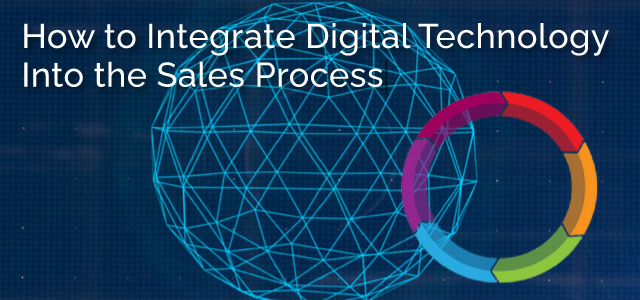How to Integrate Digital Technology Into the Sales Process
Estimated reading time: 5 minutes
The importance of integrating digital technology into the sales process cannot be overstated. In today’s digital age, customers are increasingly using online channels to research products and services, and they expect to be able to interact with businesses in a digital way. In short, by integrating digital technology into the sales process, businesses can improve their ability to reach, engage, and convert customers. This can lead to increased sales and revenue.
To discuss the importance of integrating digital technology into today’s sales processes, we invited Erik Nelson, Co-Founder of Carve Consulting, to the Ad Victoriam “Salesforce Simplified” podcast, where he also talked about how businesses can lay the groundwork to upgrade their digital technology to better compete and better serve their customers. Here are some highlights from that conversation.
What Does a Successful Integration Look Like?
This is something that probably keeps many people up at night: What would a successful integration of digital technology into the sales process look like? Here’s what Erik told us:
“In my mind, a successful integration of technology in the sales process is when the technology mirrors the intended sales process and ultimately data’s flowing through the system in a way to serve the seller or the customer with information at the right time. It needs to learn things along the way based on inputs from the users I think, so you can adjust the processes as needed and it should ultimately identify the lower value activities and automate them to free up the seller to focus on those high value activities so they’re most productive and likely to close business. When successful, I think it’s also a seamless experience for the end users and they should be ultimately clueless to which technology does what under the covers.
“You don’t want the users to focus on the technology, just the process. Finally, I think it’s important to get to an important goal to get to the point where technology covers the entire life cycle of the customer journey. So, I think of that as all the way from the top of the funnel through the sale and future renewals. So, a closed loop process.”
Customer Experience in the Sales Process
One of the things that should be talked about in any business these days is customer experience.
“Customers are smart these days,” Erik remarked. “They’ve got many of their own avenues to do their own research. They might engage you later in the process, and in many cases I think they know as much as the average salesperson about the market and their product. So, it’s important not to waste their time and spam them with basic information they can find on their own. I think technology needs to help sales with more relevant and targeted information, doing it at the right time, and it should help customers get a better experience, including self-service if that’s what they want. So, I think you need to give to get here and you should bring gifts of insights to your customers all the time.”
Key Technology Considerations
With Erik’s deep Salesforce background and what he’s doing now at Carve Consulting, we asked him about what key considerations businesses need to take seriously when choosing the right technologies to integrate into their sales process.
“I think you need to always start with identifying the gaps of automation in your current process. Salesforce is the CRM you use. You need to understand the roadmap of what they will deliver as part of the platform to fill those gaps. I would think about a platform approach as much as possible. It can be very difficult to integrate other technologies, consolidate all that data and keep a seamless experience going for your users with too many different technology platforms. But if you do need to look at alternatives, I think the first thing you consider is are you partnering with the right company to help you? Are they proven? Have they invested in your pain and can they support your needs? And be sure the technology fits into the current environment so you can continue to have that seamless process outlined for your teams.”
Erik added, “In my experience, if you get people out of the process too much along the way, we used to work on this with our customers all the time to try to streamline the process. Don’t go too many places for too much information because they’ll struggle with adoption if there’s too many places to go. And just be sure that anything that you’re going to add is going to add significant value above what you have. So this is an area we’re helping a lot of companies today, small and large.
Data and Analytics in the Sales Process
During our conversation with Erik, we also asked him how data and analytics can be utilized to optimize the sales process.
“Data and analytics are important obviously in every area of your business,” Erik remarked. “They’re used to run your business and forecast your future. I think it’s important to monitor data to continually measure what’s working and what’s not in the sales process as well. Assuming you have a defined process to start, then you can utilize many metrics to iterate the effectiveness of your sales process. So, for instance, who is the ideal customer? How did you get them? How long does it take to close a deal or how long does it take to get to value and ultimately why they churn? Those are several examples and metrics you can measure to understand areas, you can improve the process. So, you have to be able to track these and others so you can make changes to your process, which make a measurable impact on these metrics and ultimately your business.”
We covered many more topics with Erik during the podcast, including digital technology adoption within the workplace, the challenges and limitations of integrating technology into the sales process, and much more. Listen to the entire conversation here.
Related Resources:
Inside a Salesforce Implementation: From Initiation to Go-Live
When Outsourcing a Salesforce Implementation Makes Sense
Sales Cloud Implementation Best Practices
Tips for a Successful Salesforce Implementation
Subscribe to the AdVic Salesforce Blog on Feedly:



